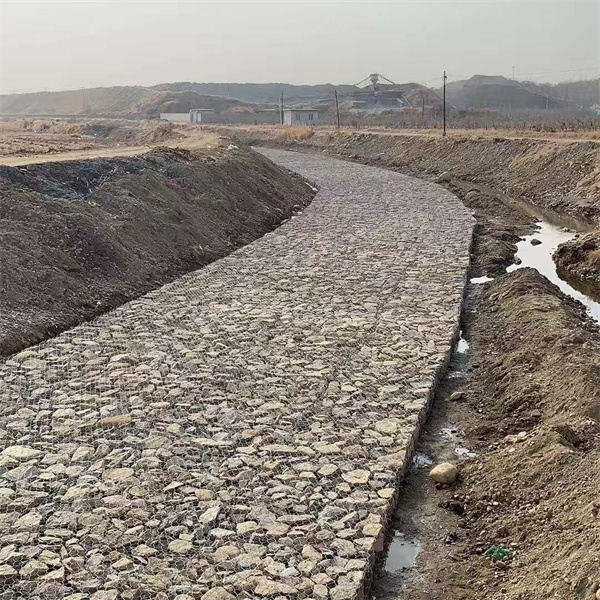നവം . 18, 2024 23:34 Back to list
Effective Gabion Drop Structures for Erosion Control and Stream Management Solutions
Understanding Best Gabion Drop Structures
In the realm of civil engineering and environmental management, gabion drop structures have gained recognition for their effectiveness in controlling the flow of water in streams, rivers, and other water bodies. This article will delve into the best practices associated with the design and application of gabion drop structures, highlighting their benefits, construction methods, and maintenance aspects.
What is a Gabion Drop Structure?
A gabion drop structure is a type of engineered structure composed of wire mesh cages filled with rocks or stones. These structures are specifically designed to inhibit erosion, manage water velocity, and reduce sediment transport in waterways. By creating a physical barrier, gabion drop structures help to maintain the stability of the streambed, thus protecting adjacent land from water damage.
Importance of Gabion Drop Structures
The importance of gabion drop structures cannot be overstated, particularly in areas prone to erosion and flash floods. When water flows over natural topography, it carries sediment with it. Such transport can lead to significant land degradation. Gabion drop structures mitigate these effects by
1. Reducing Velocity By breaking the flow of water, these structures slow down the current, thus decreasing its ability to transport sediments.
2. Erosion Control They stabilize riverbanks and streambeds, preventing soil erosion and protecting aquatic habitats.
3. Enhanced Aesthetics When properly designed, gabion structures integrate aesthetically well with natural landscapes, sometimes even providing habitats for wildlife.
4. Cost-Effectiveness Compared to traditional concrete structures, gabion drop structures can be more affordable and easier to install, particularly in remote or challenging environments.
Design Considerations
When designing a gabion drop structure, several factors must be taken into account
1. Site Assessment An in-depth study of the specific site is essential. This includes understanding the flow rate, sediment type, and topography to ensure that the structure can adequately cope with the expected water conditions.
2. Material Selection The choice of materials is crucial. The wire mesh must be resistant to corrosion and sufficiently strong to hold the weight of the rocks. Common materials used include galvanized steel or PVC-coated wire.
3. Size and Configuration The dimensions of the gabion units and their configuration directly impact the structure's effectiveness. Larger structures may be necessary for locations with high flow velocities or significant sediment transport.
best gabion drop structure

4. Foundation Stability The foundation on which the gabion drop structure rests must be stable. Depending on the site conditions, additional measures such as anchor rods or concrete footings may be necessary to prevent displacement.
Construction Method
Constructing a gabion drop structure involves the following steps
1. Site Preparation Clear the area of vegetation and debris, and level the ground where the structure will be built.
2. Installation of Gabion Cages Assemble the wire mesh cages in the designated configuration, ensuring they are properly aligned and secured.
3. Filling with Stone Fill the cages with appropriately sized stones, making sure to densely pack the materials. This ensures the structure's durability and stability.
4. Sealing and Cohesion Once filled, the gabion cages are securely closed with wire ties, ensuring that the rock material remains in place.
5. Final Adjustments Inspect the entire structure for stability and integrity, making any necessary adjustments before allowing water flow to resume.
Maintenance and Monitoring
Despite their durability, gabion drop structures require regular maintenance. This involves
1. Visual Inspections Regularly check for any signs of structural failure, such as bulging or rusting wire mesh.
2. Sediment Accumulation Periodically assess sediment levels upstream and downstream of the structure to ensure that it is functioning effectively.
3. Vegetation Growth Monitor for excessive vegetation growth that may block water flow or undermine the structural integrity.
Conclusion
Gabion drop structures are an innovative solution for managing water flow and preventing erosion in vulnerable landscapes. By understanding their design, construction, and maintenance needs, engineers can ensure that these structures provide long-term benefits to both the environment and the communities that rely on them. With the right approach, gabion drop structures can be a vital component in sustainable water management practices.
-
Why PVC Coated Gabion Mattress Is the Best Solution for Long-Term Erosion Control
NewsMay.23,2025
-
Gabion Wire Mesh: The Reinforced Solution for Modern Construction and Landscape Design
NewsMay.23,2025
-
Gabion Wall: The Flexible, Seismic-Resistant Solution for Modern Landscaping and Construction
NewsMay.23,2025
-
Gabion Wall Solutions: The Durable, Decorative, and Affordable Choice for Every Landscape
NewsMay.23,2025
-
Gabion Basket: The Durable and Flexible Alternative to Traditional Retaining Walls
NewsMay.23,2025
-
Gabion Basket: The Proven Solution for Slope Stability and Flood Control
NewsMay.23,2025
-
Versatility of Chain Link Fence Gabion
NewsMay.13,2025






